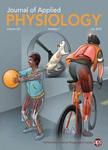版权所有:内蒙古大学图书馆 技术提供:维普资讯• 智图
内蒙古自治区呼和浩特市赛罕区大学西街235号 邮编: 010021

作者机构:Wake Forest Sch Med Sticht Ctr Hlth Aging & Alzheimers Prevent Sect Gerontol & Geriatr Med Winston Salem NC 27101 USA Maastricht Univ Nutr Sch Nutr & Translat Res Metab Dept Human Biol Med Ctr Maastricht Netherlands Virginia Tech Dept Human Nutr Foods & Exercise Blacksburg VA USA Virginia Tech Metab Phenotyping Core Blacksburg VA USA Virginia Tech Translat Obes Res Interdisciplinary Grad Educ Pro Blacksburg VA USA Virginia Tech Dept Food Sci & Technol Blacksburg VA USA North Carolina State Univ Plants Human Hlth Inst Dept Food Kannapolis NC USA
出 版 物:《JOURNAL OF APPLIED PHYSIOLOGY》 (应用生理学杂志)
年 卷 期:2020年第128卷第4期
页 面:872-883页
核心收录:
学科分类:0710[理学-生物学] 0403[教育学-体育学] 07[理学] 071003[理学-生理学]
基 金:American Diabetes Association Grant [ADA-07-12] Virginia Tech Translational Obesity Research Interdisciplinary Graduate Education Program
主 题:exercise high-fat diet metabolic flexibility skeletal muscle substrate oxidation
摘 要:Our objective was to determine the influence of a high-fat diet (HFD) on fasting and postprandial skeletal muscle substrate metabolism in endurance-trained (ET) compared with sedentary (SED) humans. SED (n = 17) and ET (n = 7) males were control-fed a 10-day moderate-fat diet followed by a 5-day isocaloric HFD (55% fat. 30% carbohydrate). Skeletal muscle biopsies were taken in the fasted condition and 4 h after a high-fat meal (820 kcals;63% fat and 25% carbohydrate). Palmitate-induced suppression of pyruvate oxidation, an indication of substrate preference. and oxidation of fat and glucose were measured in homogenized skeletal muscle in fasted and fed states. Postprandial responses were calculated as percent changes from fasting to fed states. Postprandial suppression of pyruvate oxidation was maintained after the HFD in ET, but not SED skeletal muscle, suggesting greater adaptability to dietary intake changes in the former. Fasting total fat oxidation increased due to the HFD in ET skeletal muscle (P = 0.006), which was driven by incomplete fat oxidation (P = 0.008). Fasting fat oxidation remained unchanged in skeletal muscle of SED individuals. Yet. postprandial fat oxidation was similar between groups. Fasting glucose oxidation was elevated after the HFD in ET (P = 0.036), but not SEI), skeletal muscle. Postprandial glucose oxidation was reduced due to the HFD in SED (P = 0.002), but not ET, skeletal muscle. These findings provide insight into differing substrate metabolism responses between SED and ET individuals and highlight the role that the prevailing diet may play in modulating fasting and postprandial metabolic responses in skeletal muscle. NEW & NOTEWORTHY The relationship between high dietary fat intake and physical activity level and their combined effect on skeletal muscle substrate metabolism remains unclear. We assessed the influence of the prevailing diet in modulating substrate oxidation in skeletal muscle of endurance-trained compared with sedent